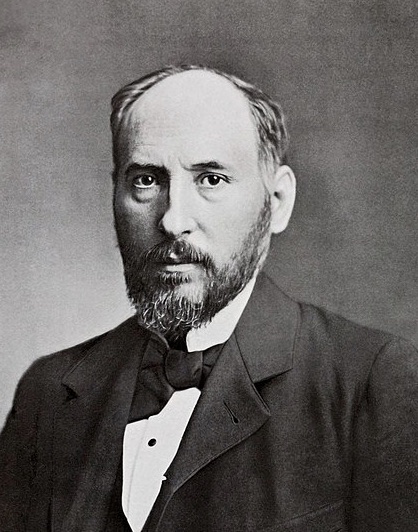
Santiago Ramón y Cajal was born on May 1, 1852 in the town of Petilla de Aragón in Spain. His early education was distributed among several schools, because his disruptive behavior, partly a consequence of his precociousness and his reluctance to submit to authority, had led to expulsions and transfers. When he was eleven years of age, Ramón was imprisoned for destroying his neighbor’s gate with a home-made cannon. Shortly after Ramón’s incarceration, his father sent him to apprentice, first as a shoemaker and later as a barber in the hope that his son would acquire self-discipline and a marketable skill.
From an early age, Ramón had demonstrated an artistic talent. In 1868, Ramón accompanied his father to graveyards where they collected human remains for his father’s work as a teacher of anatomy. Ramón began sketching bones and skeletal structures, triggering his interest in human physiology and eventually leading to his enrolment in medicine at the University of Zaragoza. After Ramón graduated in 1873 at age 21, he became a medical officer in the Spanish Army. The following year, during an expedition to Cuba, he contracted malaria and tuberculosis, and was sent back to Spain to recover.
During his convalescence, Ramón continued to study medicine with a special interest in the pathology of inflammation. In 1877, he was awarded a doctorate in medicine, and within two years became the Director of the University of Zaragoza. This was followed by an appointment as Professor of Anatomy at the University of Valencia in 1883 and at the University of Barcelona in 1887 where he developed an interest in neurology. It was in his study of neurology that his artistic skill supported his research, enabling him to make detailed sketches of neural structures in many sections of human and animal brains.
Through his groundbreaking research, Ramón y Cajal discovered the growth cone that extends from each axon and the fact that neurons are not joined in a continuous string, but are separated by “gaps,” known today as synapses. He also identified learning as the process by which neurons form connections, and for this discovery, is considered by some to be the first neurologist. In 1906, Ramón y Cajal and Italian scientist Camillo Golgi were jointly awarded the Nobel Prize in Physiology or Medicine “in recognition of their work on the structure of the nervous system”.
Ramón y Cajal continued his research until his death in Madrid on October 17, 1934 at the age of 82.
